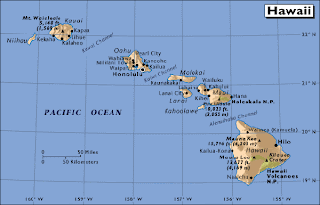
Hawaii is economically vigorous with diversified agriculture and manufacturing. However, among the states, Hawaii ranks relatively low in terms of personal income, farm products sold, value of manufacturing shipments, retail sales, and bank deposits. the high cost of living in Hawaii is one of the most significant problems that have an impact on Hawaiian economy.
Tourism remains Hawaii's leading employer, revenue producer, and growth sector. However, agricultural diversification (including the cultivation of flowers and nursery products, papaya, and macadamia nuts), aquaculture, manganese nodule mining, and film and television production have broadened the state's economic base. The public sector has a greater presence in Hawaii's economy than in any other state, accounting for 21.5% of gross state product in 2001, compared to the state average of 12%. Economic growth was relatively sluggish in Hawaii at the end of the 20th century, accelerating only from 2.2% in 1998 to 3.3% in 1999 to 4.6% in 2000. The national recession of 2001 and the after-effects of 9/11 helped reduce the annual growth rate to 2.8% in 2001, mainly through the impact on tourism. By the third quarter of 2002, however, hotel revenue in Hawaii was showing an increase over 2001, in contrast to hotel revenues in other parts of the country. Payroll employment, after declining sharply in 2001, was also showing increases.
Hawaii's gross state product in 2001 was 39th in the nation at $43.7 billion, to which financial services contributed $10.1 billion; general services (including tourism), $10 billion; government, $9.4 billion; trade, $6.5 billion; transportation and public utilities, $4.1 billion, and manufacturing, $1.2 billion.

http://www.city-data.com/states/Hawaii-Economy.html











.jpg)






























